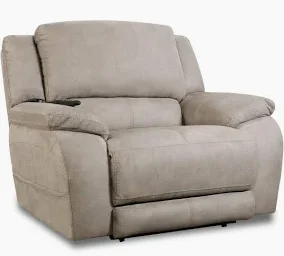Understanding Bariatric Recliners: What You Need to Know
Bariatric recliners are specialized seating solutions designed to accommodate individuals with larger body sizes, providing both comfort and support. Unlike standard recliners, bariatric recliners are engineered to support higher weight limits, often ranging from 500 to 1,000 pounds. This is achieved through a combination of reinforced construction materials and ergonomic design features that ensure durability and ease of use.
One of the primary distinctions of bariatric recliners is their robust construction. These chairs typically feature reinforced steel frames, which provide a solid foundation capable of withstanding substantial weight. The heavy-duty upholstery used in these recliners is not only durable but also designed for easy maintenance, often incorporating materials that resist stains and wear. This combination of strong frames and resilient fabrics ensures that the recliner remains functional and aesthetically pleasing for a prolonged period.
The ergonomic design of bariatric recliners is another critical aspect that sets them apart. These recliners are crafted with the user’s comfort and health in mind, featuring wide seats, high backs, and ample padding to distribute weight evenly. The reclining mechanisms are designed for smooth operation, allowing users to adjust the chair to their preferred position effortlessly. In many models, additional features such as powered lift functions are included to assist individuals in standing up or sitting down safely, thereby enhancing their overall mobility and independence.
Moreover, the importance of ergonomic design in bariatric seating cannot be overstated. Proper support and comfort can significantly improve the quality of life for individuals with larger body sizes, reducing the risk of pressure sores, muscle strain, and other discomforts associated with inadequate seating. By providing a stable and supportive seating solution, bariatric recliners contribute to better posture and overall well-being.
In summary, bariatric recliners are essential for those requiring heavy-duty seating solutions. Their thoughtful design, reinforced construction, and ergonomic features make them a valuable addition to any environment where comfort and durability are paramount. Whether for home use or in medical and caregiving settings, these recliners offer a reliable and supportive option for individuals of all sizes.
Choosing the Right Bariatric Recliner: Tips and Recommendations
Choosing the right bariatric recliner involves a comprehensive evaluation of various factors to ensure it meets individual needs effectively. A primary consideration is the weight capacity of the recliner. It’s essential to select a model that surpasses the user’s weight to guarantee safety and durability. Many bariatric recliners offer capacities ranging from 500 to 1,000 pounds, catering to a wide range of requirements.
Dimensions are another critical aspect. The seat width, depth, and height should be adequate to provide comfort without causing stress to the body. Adjustable features such as reclining positions and footrests are vital for customization and enhanced comfort. Additionally, some models come equipped with heat and massage functions, providing therapeutic benefits that can aid in relaxation and pain relief.
When comparing popular bariatric recliner models, it is crucial to consider customer reviews and expert evaluations. For instance, the Pride Mobility LC-358XL is praised for its sturdy build and multiple reclining options, though it may be on the higher end of the price scale. On the other hand, the Mega Motion Easy Comfort recliner is noted for its affordability and ease of use but may lack some premium features found in more expensive models.
Budget considerations are equally important. High-quality bariatric recliners are available across various price ranges, making it possible to find a suitable option without compromising on essential features. It’s advisable to set a budget and prioritize must-have features to make an informed decision.
Maintaining and caring for a bariatric recliner is pivotal for ensuring longevity and continued comfort. Regular cleaning, following the manufacturer’s maintenance guidelines, and checking for wear and tear can significantly extend the lifespan of the recliner. Investing in protective covers and using the recliner according to its specified weight capacity will also contribute to its durability.

